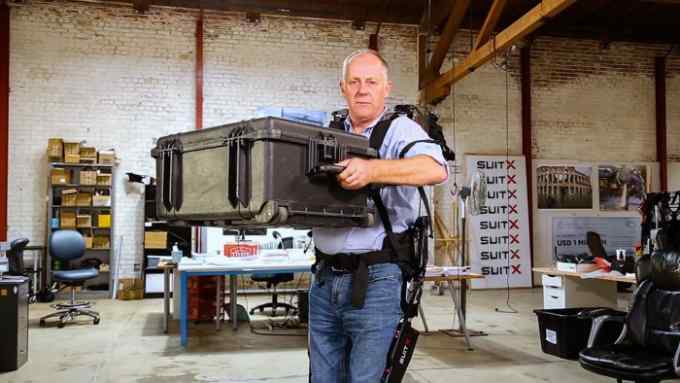Video: Exoskeletons to become common for factory workers
Roula Khalaf, Editor of the FT, selects her favourite stories in this weekly newsletter.
The idea of exoskeletons brings to mind Iron Man and enhanced superheroes, but these wearable robots may soon become common for ordinary workers in factories and warehouses.
Companies such as SuitX, based in California, are trying to turn exoskeletons into a consumer product. A lightweight harness with counterweights and pulleys can be strapped on to enhance arm, back and leg movements.
“These exoskeleton systems for workers basically minimise the stress and strain in some particular joints,” says Homayoon Kazerooni, chief executive and founder of SuitX. “We’re looking at bionic devices as affordable consumer products, such that workers can buy them.”
Costing about £12,000 for a full-body suit, the price may still be steep for some, but SuitX has sold about 400 suits so far and the exoskeleton market overall is expected to accelerate. ABI Research expects global sales of exosuits to go from fewer than 5,000 units in 2017 to more than 100,000 by 2025.
Our west coast editor, Richard Waters, went to test out one of the exosuits himself.

Comments